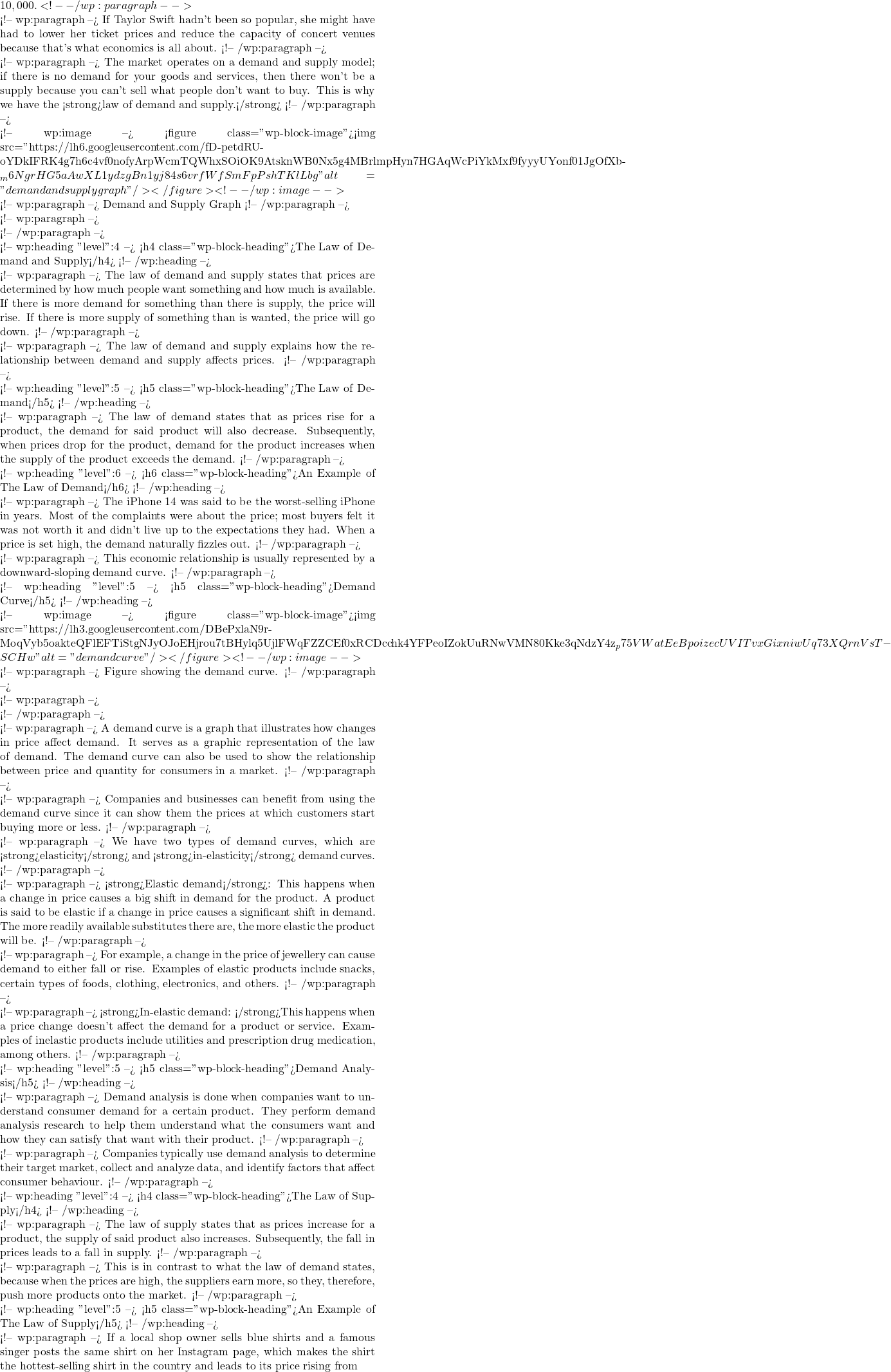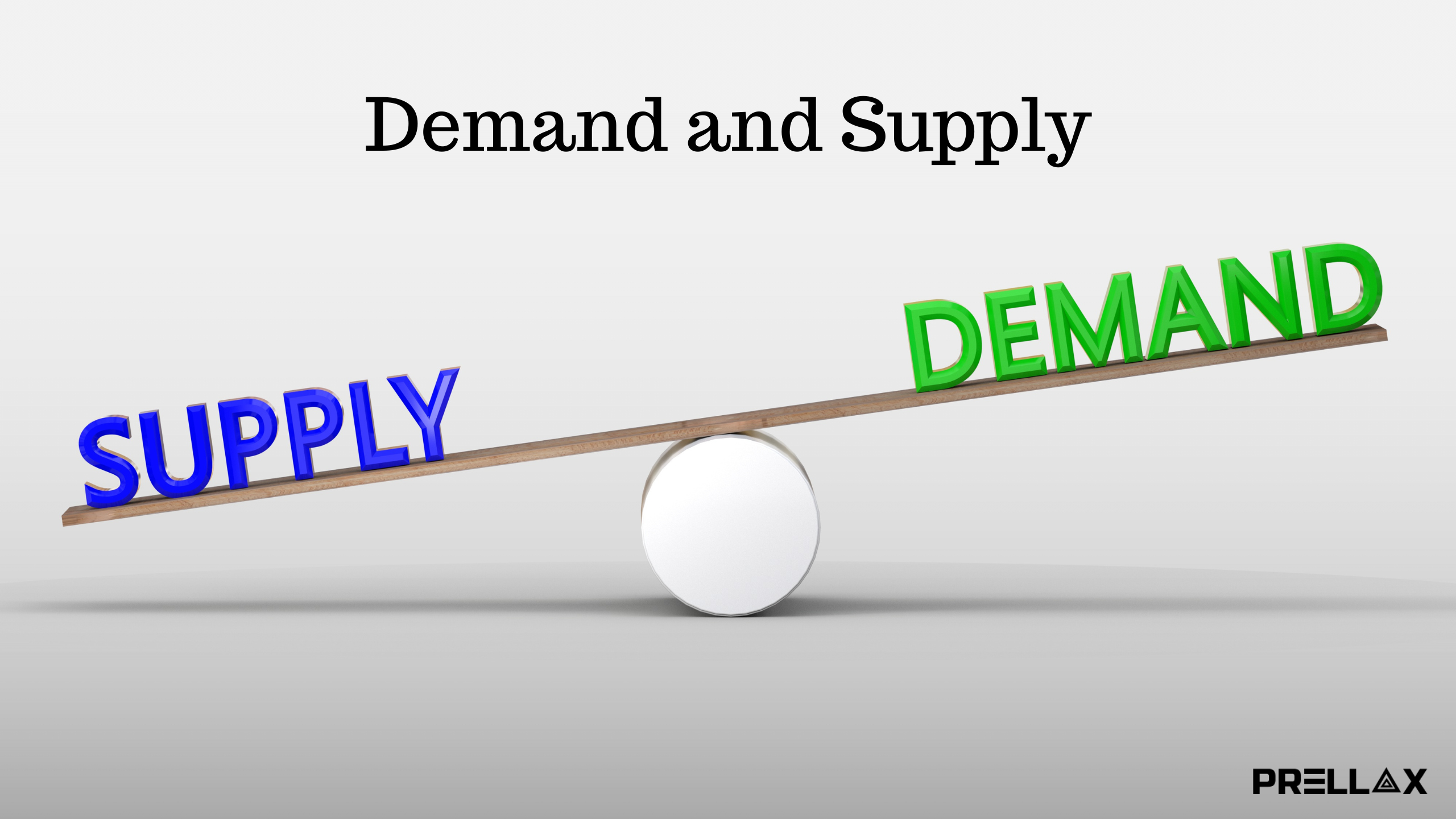Demand and supply are one of the foundational concepts of economics that explains how the market works. This is a concept that happens in your everyday life as long as you are a consumer or a seller.
A real-life example of demand and supply is Taylor Swift and her new tour. The demand from people who wanted to attend the concert was higher than the number of available tickets, so secondary sellers who saw the dilemma took advantage of it and sold one ticket for as much as  10 to $40, you will naturally go to your storage and warehouse and try and sell as many shirts as possible.
10 to $40, you will naturally go to your storage and warehouse and try and sell as many shirts as possible.
This economic relationship is usually represented by an upward-sloping supply curve.
Supply Curve
Figure showing the supply curve.
A supply curve is a graph that illustrates how a change in the price of a good or service impacts the quantity a seller supplies. The vertical y-axis displays the price, while the horizontal x-axis displays the quantity given.
Supply Analysis
This is when producers try to understand the market and the changes that happen in it. It’s a scenario where producers and companies study the market to know how much of their goods and services can be sold at different prices.
Supply analysis involves identifying the industry through the collection and analysis of data to estimate and forecast the supply. Supply analysis is important for businesses in creating market strategies and identifying business expansion.
Equilibrium (Demand and Supply)
I’m sure after reading through the laws and the concept of demand and supply, you’ll probably be thinking, “Is there no middle ground?” Well, let me introduce you to equilibrium.
Equilibrium in economics is a state in the market that happens when there is just enough supply and demand for goods and services, which leads the prices to stay the same.
When there is too much supply or too little demand, prices can change, but equilibrium is the middle ground. This is a market state where both sellers and buyers agree.
When the economy is not at equilibrium, it is said to be in disequilibrium.
Type of Equilibrium
There are different types of equilibrium.
- Economic equilibrium: This is the most common type of equilibrium and refers to a state in the economy where the market is balanced. This can be seen in a market where supply is equal to demand.
- Nash equilibrium: This is a game-concept theory used to analyze multiple players’ strategies and behaviours. This equilibrium theory was named after John Nash, a mathematician from the United States. It is a game theory that tries to figure out mathematically and logically what players should do in a game to get the best results for themselves.
- General equilibrium: General equilibrium focuses on the economy instead of analyzing only single markets. A market could be said to have achieved general equilibrium when all the markets are simultaneously at equilibrium.
Key points
- All things being equal, if prices for a product or service increase, demand will fall, as stated in the law of demand.
- While for supply, an increase in price for a product or service will lead to a rise in supply.
- Equilibrium is the balance between demand and supply in the market.
FAQ
Q. What is Demand and Supply?
Ans: Demand and supply is an economic concept that explains how the market works and how the market reacts to buyers and sellers.
Q. What are demand and supply with examples?
Ans: One of the most obvious examples of demand and supply in our generation is the rise in the purchase of Christmas songs in November and December.
People are willing to purchase songs and accessories during the festive periods, which leads to a demand for the songs and goods and leads to an increase in the price of those goods, which now leads to an increase in supply.
Q. What defines demand and supply?
Ans: Consumer and producer behavior defines demand and supply. Their behaviors on how much they are willing to pay for goods and services and how much they are willing to sell goods and services define demand and supply.
Q. What are the types of demand?
Ans: There are different types of demand, here are five of the main types of demand.
- Market demand.
- Individual demand.
- Cross demand
- Composite demand.
- Joint demand.
Take a quick quiz.
1. When prices go up and the demand falls, what is this behaviour called?
- Law of supply
- Law of demand
- Law of equilibrium
2. Which is represented by a downward slope curve?
- Demand
- Supply
- The Law
3. Which of these is not a factor that affects supply?
- Government
- Price
- Automobile

